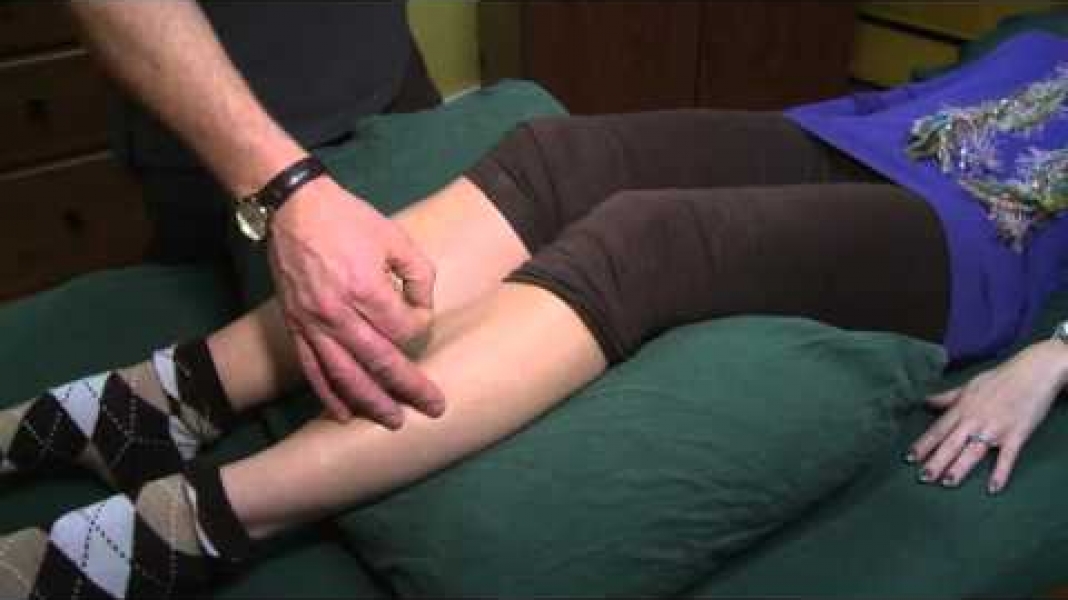

by Carl Parnham RMT
Frozen Shoulder is a condition where you lose range of motion (ROM) in the shoulder due to pain and tightening of the joint capsule. ROM is most commonly lost in abduction (raising your arm out to the side) and external rotation (arm at your side, elbow bent to 90 degrees and rotating out ward).
Dr. E. Codman used the term “Frozen Shoulder” in 1934 calling it “Difficult to define, difficult to treat…”
I see “frozen shoulder” not to be a single condition but more of a general symptom (i.e. lack of ROM) due to one or more of many possible underlining dysfunctions or injuries.
Possible causes:
- Subacromial bursitis
- Biceps tendon pathology
- Long term immobilization or disuse of shoulder (i.e. bed ridden patient, lack of shoulder use due to broken arm, etc)
- Supracapsular nerve entrapment leading to muscular dysfunction
- Rotator cuff muscle group strain (tear)
- Musculoskeletal trauma or injury to any muscles stabilizing shoulder joint
- Postural dysfunction causing atrophy of shoulder muscles or compensatory muscle strain or tendonitis
- Scar tissues or inflammation resulting from surgery
There are three stages to frozen shoulder. These use cold metaphors of freezing, frozen, and thawing, even though it has nothing literally to do with temperature. I will tell you about these stages, how to find out if you may have frozen shoulder, and what to do about it.
Stage 1: “Freezing Phase”
- Gradual on set of pain due to an injury
- Pain becomes severe at night while trying to lie on your side
- Muscle spasm may be present
- Inflammation may be present
- Stiffness setting in at about 2 weeks
- This stage may last for 2-9 months and longer if too aggressive therapy is used
Stage 2: “Frozen Phase”
- Severe pain starts to diminish
- Stiffness is now the primary complaint
- Atrophy (Decease) of muscles due to disuse
- This stage may last 4-12 months
Stage 3: “Thawing Phase”
- Pain is noted on the lateral (outside) aspect of the shoulder
- Better sleeps due to less pain in arm
- Some motion may return
- Some cases show Frozen Shoulder may resolve its self in 2 years and some can last up to 5-10 years
How to Test Yourself:
Here are some quick signs that you could be on your way to frozen shoulder. This is especially so if there is a trend for your problem getting worse over time.
- sore shoulder when working for extended periods at the computer
- throwing a ball, golfing, etc is chronically painful or tight in the shoulder area
- ·you are unable to reach above your head as easily as you once did
- ·for women, getting your bra on is more difficult
- ·early morning shoulder stiffness
- ·any ROM limitations in the shoulder
More formal tests are used to measure the actual degrees of ROM. With a “passive relaxed ROM”, someone moves your arm through its ROM without you activating your muscles. You check all directions your arm can move without going beyond where it goes easily (have someone you trust test you!). If there is pain or obvious restriction in the ROM then you have a positive test. Usually you can test your “good” shoulder first, and then compare it against the affected shoulder.
Also there is Apley’s Scratch Test
- Seat yourself
- Reach behind your head to the middle of your back with one arm as far as you can
- Then take the other arm and reach up your back
- Try to connect your fingers
- You’re in trouble if you can’t even touch your finger tips together
- Then switch arms and try again on the other side
These tests are not 100% definitive for frozen shoulder but they do mean something isn’t functioning properly and could be a good sign to get some work done on your shoulders. See your doctor or physiotherapist who are qualified to diagnose this condition. Even if it’s not a significant Frozen Shoulder, if you do nothing about it, it can become a chronic issue and become a Frozen Shoulder.
So how to prevent or deal with a shoulder problem that is not an outright injury? Visit a massage therapist or acupuncturist! Our job is to either prevent the freezing stage, lessen the severity of the frozen stage, and speed up the thawing process of a frozen shoulder. We help your muscles relax so you can adopt a more natural and efficient posture in using your shoulder. Here you can take better advantage of the strength training and stretching you will need to do to improve. You may even benefit from a few visits to a personal trainer so you can be clear about what exercises you should be doing, to make steady improvement toward your goals.




